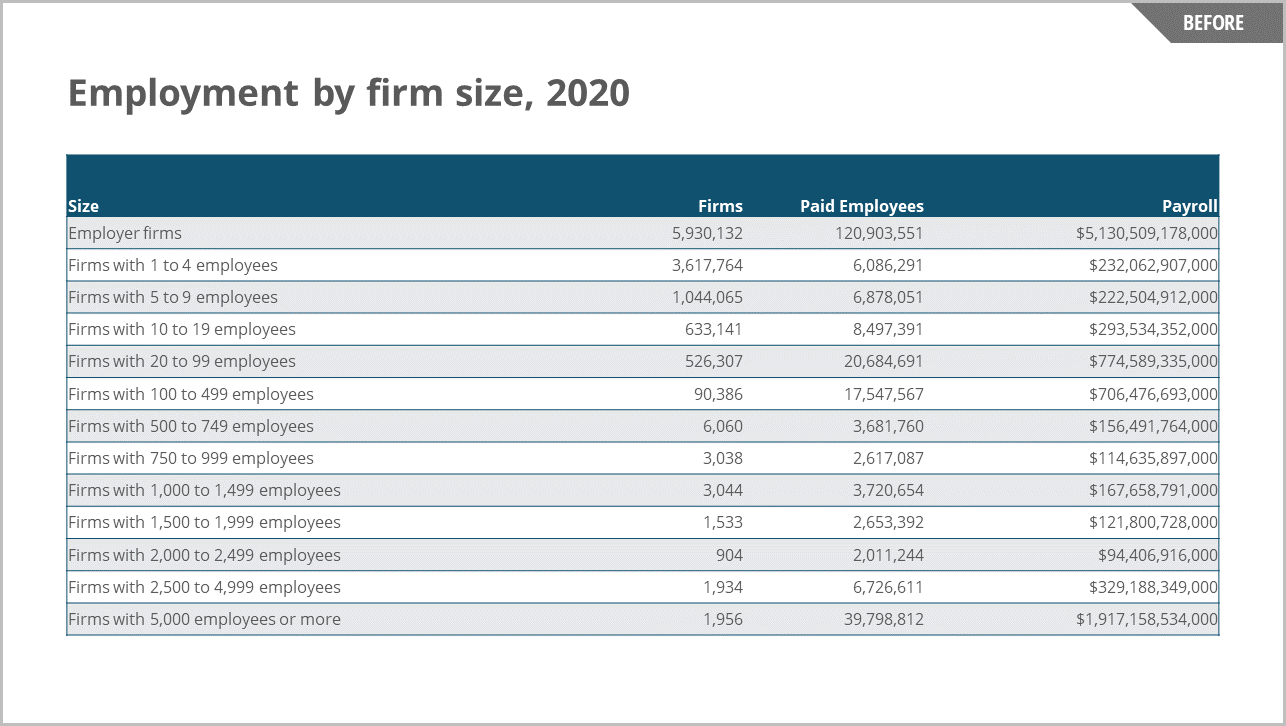How will teams elevate their ideas and drive business forward in 2020? Well, much like in years past, they’ll gather information, build a strategy, develop recommendations, and try to sell their ideas to decision-makers.
But as we head into 2020, storytelling is becoming more and more critical for every new proposal, update, or big pitch. It’s never been more vital for teams to quickly pull together one high-stakes presentation after another.
Business storytelling is the way to do it.
But nailing presentations isn’t just about employing engaged, talented people and whipping up a few pretty slides. After all, ten smart people may have ten smart—yet differing—opinions about how the story should look (and when everyone starts pulling in materials from all different sources, things get messy…). The best way to satisfy the will and talent of a fierce team facing a time crunch is to use a story framework—and a common language—that teams can leverage quickly.
A Story Framework Guides the Team from Start to Finish
First, let’s make one thing clear: story frameworks don’t preclude people from pulling slides in from outside sources. On the contrary, frameworks enable the entire team to see precisely where a contributed slide or idea might (or might not) fit in to the narrative. A story framework makes building a story as a team easy and quick. It’s the ultimate roadmap.
Here are three storytelling tips your team NEEDS to know in 2020:
1. Think First, Create Second
When team presentations kick off, what’s the first thing everyone does? Spring into action and “borrow” slides from old decks, right? They end up with the worst manifestations of team presentations: the “Frankendeck”. While each slide might look decent on its own, together they lack a cohesive storyline. What’s worse is that getting Frankendecks to tell a clear, succinct story often requires many more rounds of edits than when starting with the story structure. So, first things first: before any slide is built or adapted, the team must agree on the narrative. Visuals emerge from there. In other words: think first, create second.
Now, onto the story. Stories will contain four recognizable elements, or “signposts”: characters, setting, conflict, and resolution. The first three (characters, setting, and conflict) signposts should directly answer the question: why should anyone care about this story? The final signpost, resolution, will detail the HOW of the story.

2. Decide (as a Team) on Your Key Message—Your BIG Idea
Every great story contains a BIG Idea. It’s absolutely critical for the team to agree on what that is. Why? Because the BIG Idea boils down the ONE critical message your audience must remember. It clearly illuminates WHAT the story is fundamentally about and should be woven throughout the entire narrative.
{% video_player “embed_player” overrideable=False, type=’scriptV4′, hide_playlist=True, viral_sharing=False, embed_button=False, autoplay=True, hidden_controls=True, loop=True, muted=False, full_width=False, width=’800′, height=’450′, player_id=’24417526360′, style=” %}
With this in place, when team members build their respective pieces of the presentation, this single message—like a beacon—guides all of the other content. Every single fact, data point, or idea must adhere to the BIG Idea. The BIG Idea helps everyone work towards the same goal.
3. Active Headlines Tell the Story for You
With the BIG Idea in place—guiding the rest of the story—another powerful tactic to push the narrative forward are active headlines. How do active headlines drive that story forward? They put the most important piece of information right at the top of the slide. Active slide headlines blare the key insight of the slide to offer the audience the most important piece of information instantly. Notice the difference in the example below between the vague header (“before”) and the active headline (“after”).


Maybe it’s a new discovery from the data, maybe it’s a recommendation. Whatever it is, active headlines always pull out the most vital piece of information and bring them to attention.
Active headlines also make it easy to deliver a presentation if team members are not there or, if the deck is being emailed. With active headlines, the story will tell itself.
Get Ready for a Smooth “Game Day” Team Performance
Even with tons of preparation, what actually happens when you present can vary widely. When we’re coordinating a full team, the chance for mishaps can increase. Imagine that inquisitive, impatient executive in the audience who asks the team to jump back or forward in the deck. Having a story framework that every team member inherently understands (and can follow) is hugely helpful. At any point in the presentation, each team member knows exactly where they—and the rest of their team—are in the story.
Having this context is indispensable when multiple presenters are switching off with one another. Nobody will ever lose their place or freeze up again.
Build a Culture of Storytellers at Your Company
Business storytelling will pervade in 2020 and the more it is practiced, the deeper it will be entrenched in organizational culture. Teams that span departments, functions, or regions will have an easier time collaborating on presentations if everyone speaks the language of storytelling. Slides will fit together in an obvious way, messaging will be straightforward, and visuals will be consistent. Get ready for the new decade with the vital language of business storytelling. Happy New Year!
To learn more about team storytelling, check out our 3x award-winning business storytelling workshop or call us at 1-888-991-0208.
